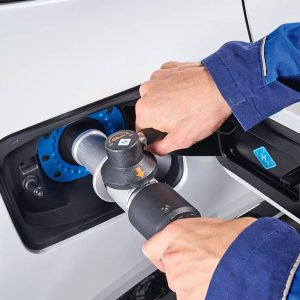
Tech Talk: Why fuel cell technology refuses to be beaten
Filling up a vehicle with 5kg of hydrogen takes around 3 minutes, putting it at par with fuel and diesel refuelling. Published On Mar 08, 2023 08:00:00 AMContinuous power output of BMWs fuel cell system has actually doubled while size and weight have reduced.As the will-it-wont-it story of fuel cell electric lorries (FCEVs) continues to babble on, BMW and Toyota Motor Manufacturing in the UK, both announced new strategies for FCEVs in early December. BMW has actually begun producing a restricted run of its iX5 Hydrogen, which will be utilized as technology demonstrators. On the other hand, a consortium led by Toyota Motor Manufacturing UK is beginning work on a project moneyed by the UK federal government, through the Advanced Propulsion Centre, to migrate the second-generation fuel cell system (as used in the Mirai) into a Hilux pickup.Since the international industry set out in the late 1990s to make fuel cell lorries basically traditional by 2004, then singly stopped working, innovation has moved on a lot. The obvious advancement is the arrival and quick maturing of automotive-scale lithium battery systems, which in only a number of decades took BEVs from the level of dodgy models to a common sight on the roads. Weve also seen how hybrids have been stretched well beyond the original Toyota Prius to range-extended cars (series hybrids) and plug-in hybrids.Once FCEVs had actually moved beyond the early model stage, they essentially became series hybrids, but with hydrogen fuel cells to supply a constant stream of electrical power instead of an engine and a small battery to offer the punch required for acceleration. The battery also shops energy from regenerative braking in the same way as other energized automobiles. Whats also changed since those early days is that, along with the battery technology, electric drivetrains are now well developed in the industrial domain. In BMWs case, the drivetrain is taken from the fifth-generation eDrive technology utilized in its BEVs and plug-in cars.The other big change considering that those early days of FCEVs is the manufacture of the fuel cell stacks, consisting of numerous little fuel cells (the equivalent of battery cells in a battery pack). One of the difficulties that had to be gotten rid of was that, early on, stacks had to be hand-assembled, but while the FCEV story might appear to have gone quiet, plenty of work has actually been continuing in the background.The stacking of cells in the BMW stack is now completely automated, and after thats done, its compressed and placed into a cast aluminium real estate. The pressure plate that individually brings the hydrogen and oxygen to the stack is made from cast plastic and light alloy casting. BMWs hydrogen fuel cell system produces 125kW and the powertrain 374hp. There are 2 hydrogen tanks carrying 6kg of compressed hydrogen, which can be filled up at the pump in three to 4 minutes, providing a variety of 500km. While it might have looked as however little was taking place in the field of FCEVs, the work has continued and the expertise in fuel cell style has grown. As well as BMW partnering with FCEV veteran Toyota on fuel cell development, Honda and General Motors are also partners, and Mercedes-Benz maintains its relate to the doyen of fuel cell development, Canadian company Ballard Power Systems.Fast hydrogen fill-upsIn California, hydrogen filling stations are serving more than 8,000 FCEVs. The typical time required to sustain one with 5kg of hydrogen is just over three minutes and the very best is two and a half minutes, putting hydrogen refuelling times in the genuine world on par with fuel and diesel.Also see: Tech Talk: How gearbox expert ZF is revolutionising EVsTech Talk: How Audis new tech reduces climatic CO2Copyright (c) Autocar UK. All rights booked.
Published On Mar 08, 2023 08:00:00 AMContinuous power output of BMWs fuel cell system has actually doubled while size and weight have reduced.As the will-it-wont-it story of fuel cell electrical lorries (FCEVs) continues to babble on, BMW and Toyota Motor Manufacturing in the UK, both revealed new strategies for FCEVs in early December. In BMWs case, the drivetrain is taken from the fifth-generation eDrive innovation utilized in its BEVs and plug-in cars.The other huge modification given that those early days of FCEVs is the manufacture of the fuel cell stacks, comprising hundreds of little fuel cells (the equivalent of battery cells in a battery pack). As BMW partnering with FCEV veteran Toyota on fuel cell advancement, Honda and General Motors are likewise partners, and Mercedes-Benz keeps its links with the doyen of fuel cell development, Canadian company Ballard Power Systems.Fast hydrogen fill-upsIn California, hydrogen filling stations are serving more than 8,000 FCEVs.
Leave a reply